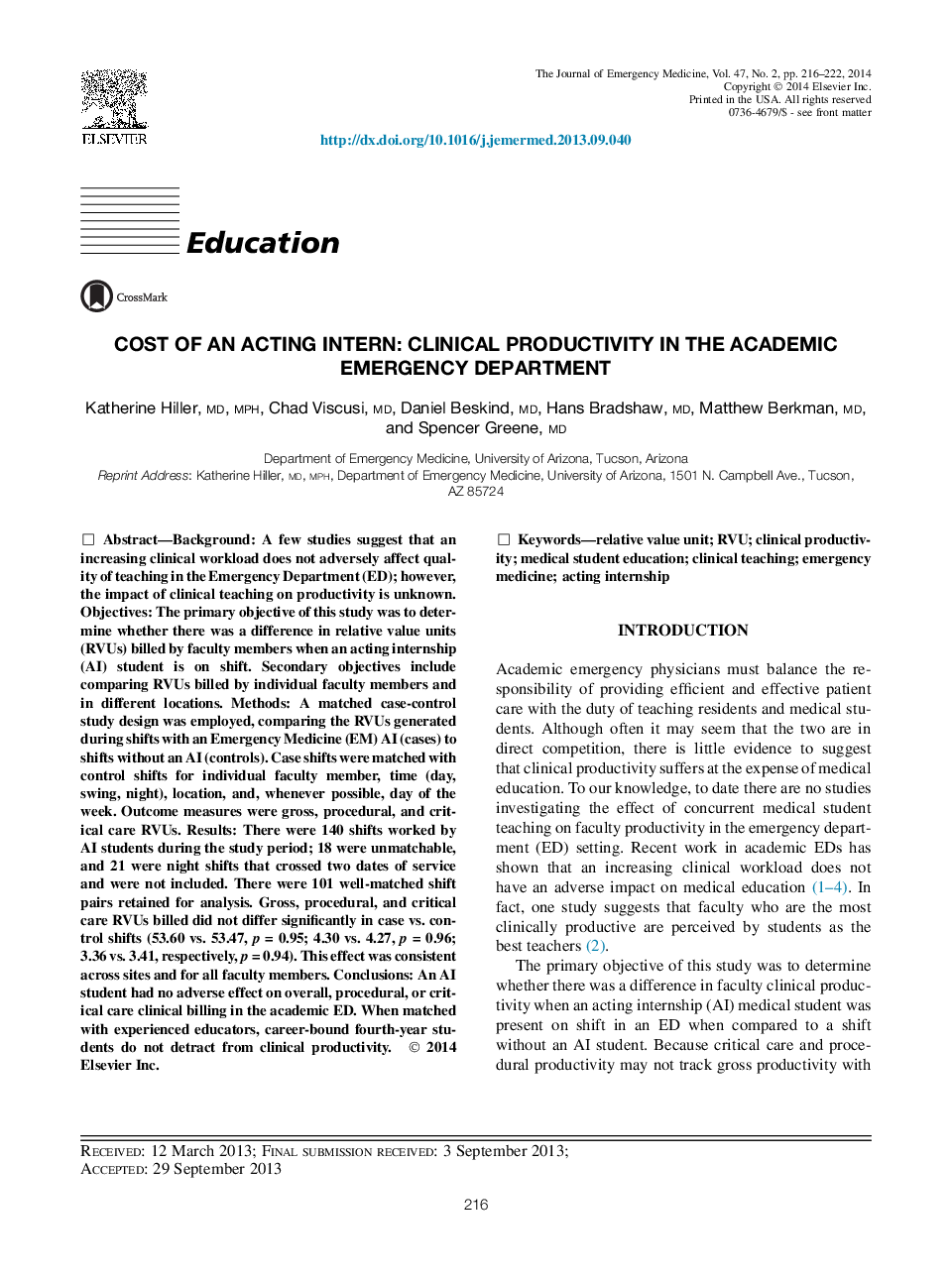| Article ID | Journal | Published Year | Pages | File Type |
|---|---|---|---|---|
| 3247105 | The Journal of Emergency Medicine | 2014 | 7 Pages |
BackgroundA few studies suggest that an increasing clinical workload does not adversely affect quality of teaching in the Emergency Department (ED); however, the impact of clinical teaching on productivity is unknown.ObjectivesThe primary objective of this study was to determine whether there was a difference in relative value units (RVUs) billed by faculty members when an acting internship (AI) student is on shift. Secondary objectives include comparing RVUs billed by individual faculty members and in different locations.MethodsA matched case-control study design was employed, comparing the RVUs generated during shifts with an Emergency Medicine (EM) AI (cases) to shifts without an AI (controls). Case shifts were matched with control shifts for individual faculty member, time (day, swing, night), location, and, whenever possible, day of the week. Outcome measures were gross, procedural, and critical care RVUs.ResultsThere were 140 shifts worked by AI students during the study period; 18 were unmatchable, and 21 were night shifts that crossed two dates of service and were not included. There were 101 well-matched shift pairs retained for analysis. Gross, procedural, and critical care RVUs billed did not differ significantly in case vs. control shifts (53.60 vs. 53.47, p = 0.95; 4.30 vs. 4.27, p = 0.96; 3.36 vs. 3.41, respectively, p = 0.94). This effect was consistent across sites and for all faculty members.ConclusionsAn AI student had no adverse effect on overall, procedural, or critical care clinical billing in the academic ED. When matched with experienced educators, career-bound fourth-year students do not detract from clinical productivity.
